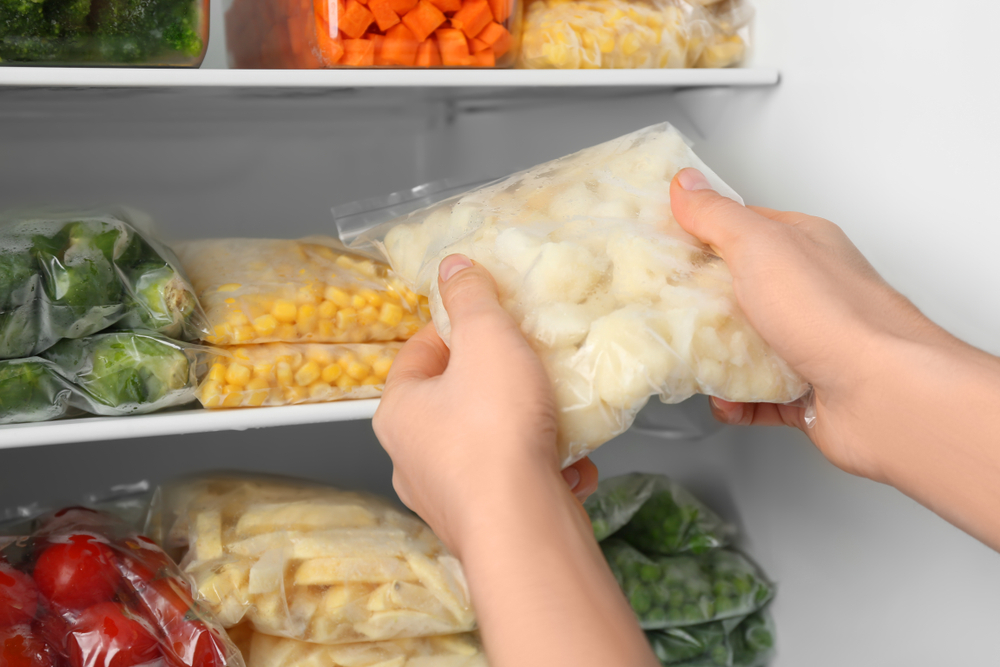Last Updated on June 11, 2024 by admin_hunter
| As someone who loves to experiment with food and explore different culinary techniques, freezing has become an essential tool in my kitchen. Whether it’s preserving the freshness of fruits and vegetables or extending the shelf life of cooked meals, freezing offers a convenient solution. In this comprehensive guide, I will delve into the process of freezing, its applications in food preservation, and answer common questions about freezin Table of Contents – [Introduction](#introduction) – [The Freezing Process](#the-freezing-process) – [Benefits of Freezing](#benefits-of-freezing) – [Freezing Foods](#freezing-foods) – [Preserving Fruit and Vegetables](#preserving-fruit-and-vegetables) – [Preventing Freezer Burn](#preventing-freezer-burn) – [FAQs](#faqs) Introduction Freezing is an important technique that allows me to store and preserve various foods for an extended period. Whether I’ve cooked a large batch of my favorite soup or bought a surplus of ripe fruits, freezing helps me avoid waste and keeps my ingredients fresh. In this article, I will explore the fascinating process of freezing, its benefits, and provide useful tips for freezing different types of foods. The Freezing Process Freezing is the transformation of a substance from a liquid to a solid state due to the reduction in temperature. When we lower the temperature of a substance, its molecules slow down and come closer together, resulting in the formation of a solid. This change in state occurs when the substance’s temperature reaches its freezing point. Water, for example, freezes at 0 degrees Celsius (32 degrees Fahrenheit). As the temperature drops below this point, the water molecules lose energy and begin to arrange themselves into a crystalline lattice structure, forming ice. The freezing process is an exothermic one, meaning that it releases energy in the form of heat. Benefits of Freezing Freezing offers several benefits when it comes to preserving food. Here are some key advantages of freezing: 1. **Extended Shelf Life**: Freezing slows down the growth of bacteria, molds, and yeasts that can cause food spoilage. By keeping foods at low temperatures, we can significantly extend their shelf life, allowing us to enjoy them at a later time. 2. **Maintains Nutritional Value**: Freezing helps retain the nutritional value of foods. While certain vitamins and enzymes may be slightly affected, the overall impact is minimal. Freezing is a great way to prevent nutrient loss compared to other preservation methods. 3. **Convenience**: Freezing allows us to prepare meals in advance and store them for later consumption. This comes in handy on busy days or when we want to minimize cooking time. It also provides the flexibility of preparing larger batches of food and dividing them into individual portions. 4. **Preserves Food Quality**: Properly frozen foods retain their texture, taste, and flavor, ensuring that they taste as delicious as freshly prepared meals. Freezing locks in the natural moisture, preventing foods from becoming dry or losing their original quality. Freezing Foods When it comes to freezing foods, it’s important to understand the best practices to maintain their quality and flavor. Here are some guidelines to follow: 1. **Choose Fresh Ingredients**: Start with high-quality, fresh ingredients for optimal results. Freezing cannot improve the quality of foods, so it’s crucial to begin with the best possible ingredients. 2. **Prepare Foods for Freezing**: Properly prepare foods for freezing by cleaning, peeling, and cutting them into suitable portions. For example, blanching vegetables before freezing helps preserve their color, texture, and flavor. 3. **Packaging**: Use suitable containers or freezer bags to prevent freezer burn and maintain food quality. Remove excess air from the containers or bags to minimize the risk of freezer burn. 4. **Labeling**: Always label the containers or bags with the name of the food and the date it was frozen. This helps keep track of the contents and ensures that older items are used first. 5. **Freeze in Portions**: If you anticipate needing only a portion of a particular food, freeze it in smaller portions. This way, you can thaw and use only what you need, minimizing food waste. 6. **Storage Time**: While freezing helps prolong the shelf life of foods, it’s still important to keep track of storage times. Different foods have varying recommended freezer storage times, so be sure to check specific guidelines. Preserving Fruit and Vegetables Freezing is an excellent means of preserving fruits and vegetables when they are in season or abundant. By properly freezing them, we can enjoy their flavors and nutritional benefits throughout the year. Here’s how to preserve fruit and vegetables: 1. **Selecting the Right Produce**: Choose ripe, undamaged fruits and vegetables for freezing. Wash them thoroughly and remove any stems, pits, or seeds. 2. **Blanching**: Blanching is the process of briefly boiling fruits or vegetables before freezing them. This step helps to deactivate enzymes that can lead to flavor and texture changes during storage. 3. **Cooling and Packaging**: After blanching, cool the fruits or vegetables quickly by placing them in ice-cold water. Once cooled, drain them thoroughly and pack them into suitable containers or freezer bags. Ensure to label each container with the name and freezing date. 4. **Freezing Time**: Place the containers or bags in the freezer promptly after packing. For best results, freeze fruits and vegetables at their peak freshness to lock in flavor and nutrients. Preventing Freezer Burn Freezer burn is a common issue that affects frozen foods when they are improperly stored. It occurs when air comes into contact with the food, causing dehydration and deteriorating its quality. Here are some ways to prevent freezer burn: 1. **Proper Packaging**: Ensure that all foods are tightly sealed in containers or freezer bags. Remove excess air before sealing to minimize the risk of freezer burn. 2. **Quality Containers**: Use freezer-safe containers or bags that offer a good seal. Avoid using containers that may crack or allow air to enter. 3. **Avoid Temperature Fluctuations**: Fluctuating temperatures can lead to condensation and subsequent freezer burn. Keep your freezer at a constant temperature to maintain the quality of frozen foods. 4. **First In, First Out (FIFO)**: Organize your freezer by practicing the FIFO method. Use older frozen items first to prevent them from staying in the freezer for extended periods and potentially developing freezer burn. FAQs How does freezing work? Freezing works by lowering the temperature of a substance below its freezing point, causing it to change from a liquid to a solid state. This process slows down the growth of microorganisms, extending the shelf life of food. Is freezing a suitable method for preserving all types of foods? While freezing is an effective method for preserving most foods, there are exceptions. Certain fruits and vegetables, such as lettuce and cucumbers, have high water content and do not freeze well. Similarly, dairy products like milk may change in texture after freezing. Can I freeze cooked meals? Yes, you can freeze cooked meals. Freezing cooked meals allows you to prepare larger batches and have ready-to-eat portions available for busy days. It’s important to cool cooked meals completely before freezing and use suitable containers to maintain their quality. How long can I store food in the freezer? The recommended storage times for frozen foods vary depending on the type of food. Generally, most foods can be stored in the freezer for several months to a year without significant loss in quality. Refer to specific guidelines for each food item. Can I refreeze thawed food? It is generally safe to refreeze thawed food if it was thawed in the refrigerator and not left at room temperature for an extended period. However, it’s best to use refrozen food as soon as possible to maintain its quality. Conclusion Freezing is a versatile preservation method that allows us to prolong the shelf life of various foods while retaining their flavor and nutritional value. By understanding the freezing process, best practices for freezing different foods, and how to prevent freezer burn, we can make the most of this essential kitchen technique. Embrace the convenience of freezing and explore the endless possibilities it offers in preserving and enjoying your favorite meals. |

